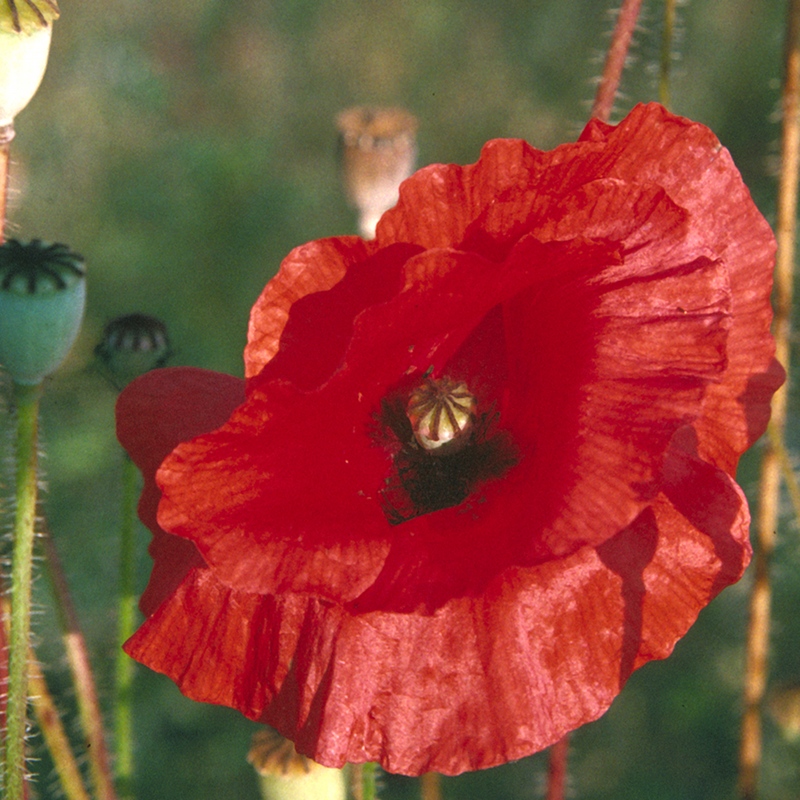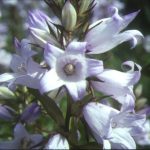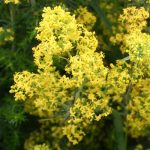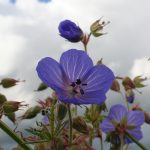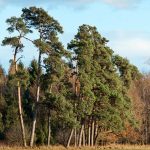Description
Poppy (Papaver rhoeas)
‘But pleasures are like poppies spread: You seize the flower, its bloom is shed.’ (from ‘Tam o’Shanter’ by Robert Burns). These bright scarlet wildflowers were once a familiar sight in cornfields throughout Scotland, but are now much less common due to modern farming methods. They flower briefly in summer and, as they are annuals, if you would like them the next year you must re-sow them. Up to 60cm tall.
Sowing: sow in early autumn or in spring. Scatter the seeds directly onto the surface of a fine-raked seed bed in a sunny, well-drained position where you would like them to flower, firming down well. Water well & keep young plants weeded.
1000+ seeds per packet.
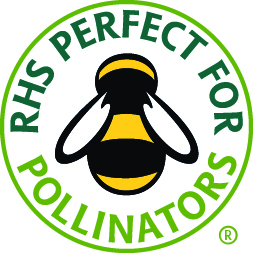
Gallery
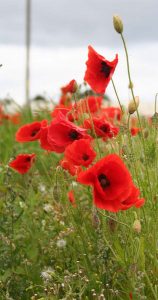
Corn Poppies (Papaver rhoeas)
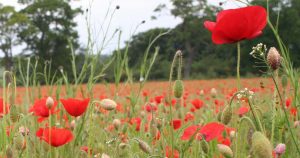
Corn Poppies (Papaver rhoeas) flowers and buds
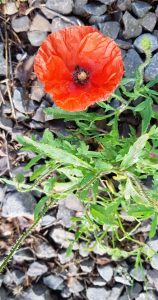
Corn Poppy (Papaver rhoeas) flower and leaves
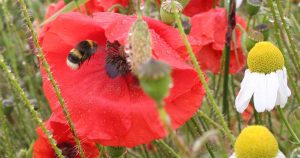
Corn Poppy (Papaver rhoeas), Mayweed (Tripleurospermum inodorum) and bumblebee
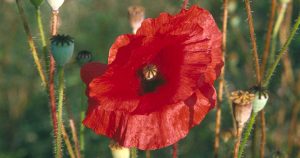
Corn Poppy (Papaver rhoeas) flower and seedheads
Find out more
Poppy (Papaver rhoeas)
This species is not strictly speaking a wildflower but the plant has been in the British Isles for many hundreds of years. It came to the islands with cereal crops which is why it is also known as Corn Poppy and, with Cornflower, Corn Marigold and Mayweed, is known as a cornfield annual (which you can find here).
Although the flower and stems of poppies (including the other Scottish poppy, Long-headed Poppy (Papaver dubium), are very delicate, hence the famous Robert Burns quote from Tam O’Shanter; ‘But pleasures are like poppies spread, You seize the flower, its bloom is shed‘, but the seeds of this plant are very long lived in the soil. They germinate when the soil is disturbed enough for the tiny seeds to come to the surface where warmth and light make them grow. This is why they can turn up at field margins, on building sites and, tragically, flowered on the ruins of World War 1 battlefields, becoming a symbol of the tragedy of war.
The Gaelic names of this species include Meilbheag, Blath nam Bodach, Cathlach Dearg, Ceann-choileach-dearg, Crom-lus, Currac an Righ, Iothros, Paipean Ruadh, Fothros (sources: ‘Ainmean Gaidhlig Lusan (Gaelic Names of Plants)’, Joan w. Clark & Ian MacDonald, 1999 and ‘The Scots Herbal’, Tess Darwin, 1996).
Poppy seeds are also used in flavouring although they are technically toxic, and contain very small amounts of narcotic compounds.
If you want them to grow you must find a well-drained, sunny site and sow them on the surface. If you would like to see their startingly red flowers every year you must re-sow them – you can collect seed from their seed-heads. Once the seed-heads are ripe they are hard and form little ‘pepper pots’. You can tip seed from them into your hands. As usual if you want to store seeds, keep them somewhere cool, dry and away from mice (those ‘wee, sleekit, cowrin, tim’rous beasties!)

